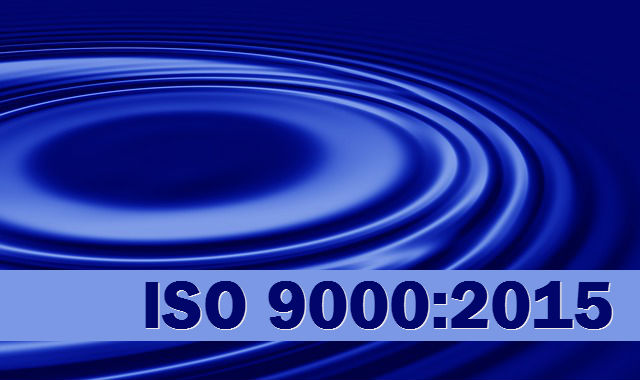
by Paul Palmes:
In a recent conversation about ISO 9000:2015 as a fundamental companion to ISO 9001:2015, my mind wandered back to friendly arguments in college about the meaning of life, trees falling in deep woods, and my roommate’s business-minded reply to the great poultry debate. It went something like this:
“Of course, there’s always the question about the chicken and the egg. Although it might be fun, I wouldn’t spend a lot of time arguing either side. Regardless of which came first, I’d prefer an interesting conversation regarding the value of each. You know, even if only singing the praises of their respective contributions to breakfast and dinner, at least they’re proven to be relevant in our daily lives.”
“At least they are relevant in our daily lives.” Yes, in the end it’s all about value and relevance. The ISO 9001 quality management system (QMS) standard is of greater value and relevance when the user incorporates ISO 9000—when the user has a true understanding of the terms and concepts in ISO 9000. The same is true when the user incorporates ISO 9004, but that’s the subject of another article.
But the Draft International Standard (DIS) version of ISO 9001:2015 goes further than relevance and value by stating in clause 2 that ISO 9000:2015 is its “normative reference.” But this is nothing new. Each revision of ISO 9001 has consistently cited ISO 9000 as normative.
So, what is a normative reference? I believe that most within the ISO user community simply don’t know the answer. The common misinterpretation is stated as, “Normative means that the standard writers used it when they developed the standard.” This was certainly true during the development of ISO 9001:2015, but is far from the definition of normative. Nor is, “As a normative reference, ISO 9000:2015 helps the user understand the normal definitions of certain words and concepts.” Let’s award partial credit for this statement, but we’re still far from the full meaning of normative.
Definition
ISO/IEC Directives, Part two, Section 6.2.2, defines the inclusion of a normative reference as, “This conditional element shall give a list of the referenced documents… in such a way as to make them indispensable for the application of the document.” In other words, by citing ISO 9000:2015 as a normative reference, it is therefore considered as indispensable to the application of ISO 9001. The ISO 9001:2015 DIS revision makes this crystal clear with additional text citing the “indispensable” relationship between these standards.
If you were to right-click on the word “indispensable” and scroll down to synonyms the following words appear: “crucial,” “vital,” “essential,” “necessary,” “requisite,” “obligatory,” “central,” and “very important.” If all these are actually relevant, there must be value to including ISO 9000 when developing or revising your ISO 9001 QMS. This is especially true in light of changes in the 2015 revision of ISO 9001.
New terminology
There are numerous terms that are new to the language of ISO 9001:2015. “Context of the organization,” “documented information,” “interested parties,” “risk-based approach,” and the differences between terms such as “output,” “outcome,” and “result” are only a few. There are many more, and to not understand what these terms and phrases represent is an open invitation for confusion and unresolved discussions both within your company and during your second- and third-party audits. Neither is productive.
ISO 9000:2015 is indispensable to reducing these wastes, especially when explaining or defending your QMS. We’ve all experienced the awkwardness of auditors driven more by their opinions than by the actual words within the ISO 9001:2015 standard. And this is precisely what ISO 9000:2015 provides to clear the air, providing confidence in your ability to defend your approach and position. It’s invaluable in this regard and is rooted in a fundamental principle of management: decisions based on fact. The “facts,” the real meaning and intent of these words and phrases, are in ISO 9000 and discussions that disregard it are far less capable of a meaningful outcome. That’s the primary value of ISO 9000:2015 and its invaluable potential to keep everyone on the same page.
Is this a secret?
We live in interesting times. The release of ISO 9001:2015 will necessitate over 1 million companies, consultants, and auditors to understand an entirely new set of concepts, phrases, and terms, not the least of which is the true meaning of the term “normative.” However, few websites, blogs, or articles have addressed these subjects from a fundamental perspective. Why do registrars not require that organizations provide a copy of ISO 9000 during audits? Why do practically all ISO 9001 introductory web pages never mention ISO 9000 as normative to ISO 9001 with additional text to describe the importance of using and understanding both standards? It shouldn’t be a secret that the concepts and definitions of quality management terminology, indispensable to implementation of ISO 9001, are readily available in ISO 9000. Finally, when ISO 9001:2015 is released (planned for late September of this year), take the package approach and obtain copies of the complete set of standards—ISO 9000:2015, ISO 9001:2015 and ISO 9004. After all, value and relevance is best assured when standardized information is utilized among all “interested parties.”
About the author
Paul Palmes is principal consultant with Business Systems Architects Inc. of Fargo, North Dakota, and Prescott, Wisconsin. Working as a specialist in quality management and world-class quality systems over the past 30 years, he has enabled many organizations to attain ISO 9001 registration and many others to improve profitability and culture. He is a Certified Quality Manager and BSI Certified Lead Auditor.
His many publications include two books, Process Driven Comprehensive Auditing and The Magic of Self-Directed Work Teams, published by ASQ Quality Press, and articles written for The Auditor and ASQ’s Quality Progress magazine.
A longtime member of the U.S. TAG to ISO TC 176, he’s held positions as vice chair and membership chair and represented the United States as lead delegate and working group secretary in the development of international guidance standard, ISO 10014—Quality management—Guidelines for realizing financial and economic benefits. He also served as U.S. TAG representative and international TC 176 liaison to the IAF, co-chair of the IAF’s ISO 9000 Advisory Group, and a member of the Auditing Practices Group (APG). He is currently chairman of ISO/TC 176, SC 1, responsible for the 2015 revision of ISO 9000, and a member of the ISO Joint Technical Coordinating Group (JTCG).
He can be reached by email at pcpalmes@cableone.net.


This article is educative really. Nice effort by Paul.
I wish I could have more interesting topics to deepen my knowledge about Standards generally, and QSM Standards in particular.